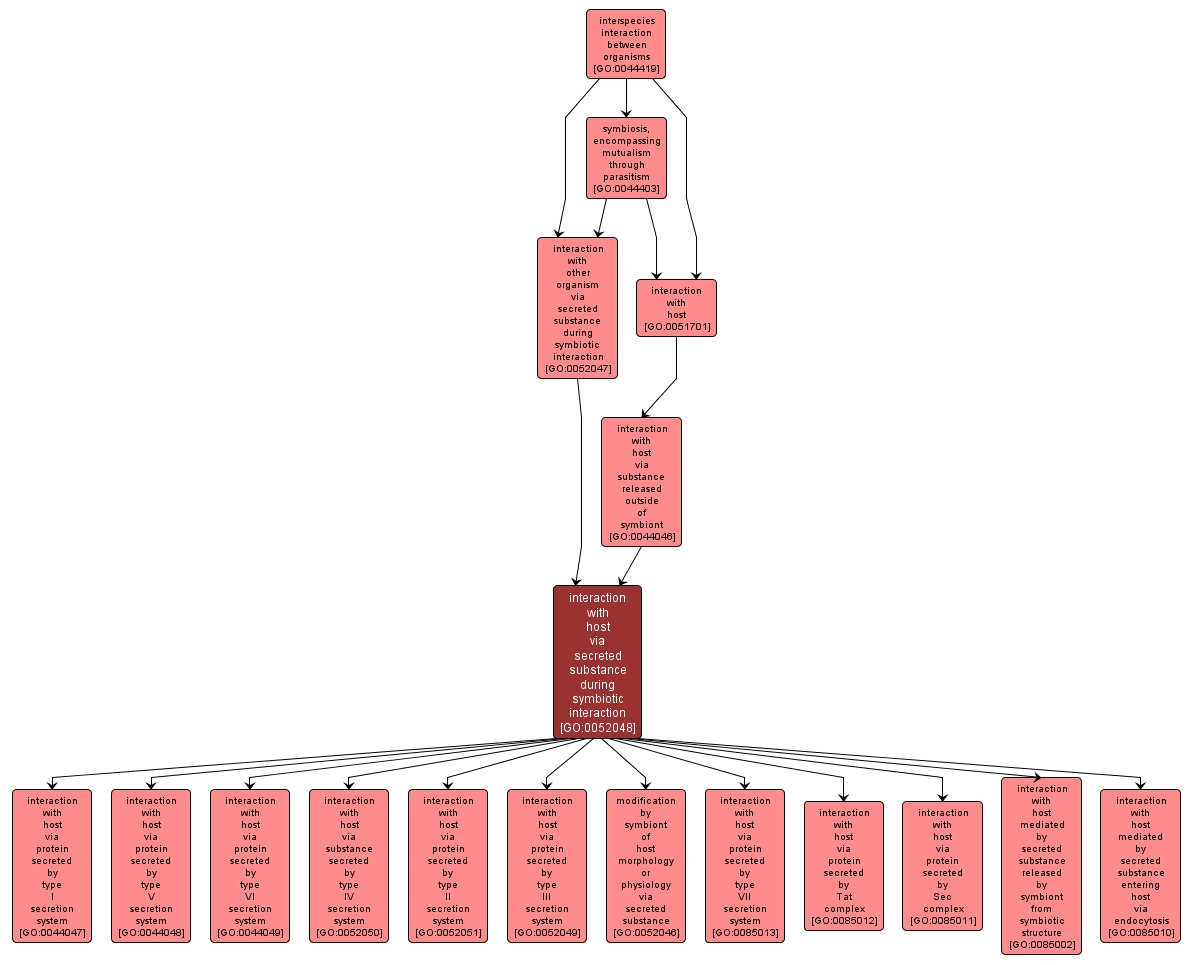GO TERM SUMMARY
|
| Name: |
interaction with host via secreted substance during symbiotic interaction |
| Acc: |
GO:0052048 |
| Aspect: |
Biological Process |
| Desc: |
An interaction with the host organism mediated by a substance secreted by the other (symbiont) organism. The host is defined as the larger of the organisms involved in a symbiotic interaction. |
|

|
INTERACTIVE GO GRAPH
|














